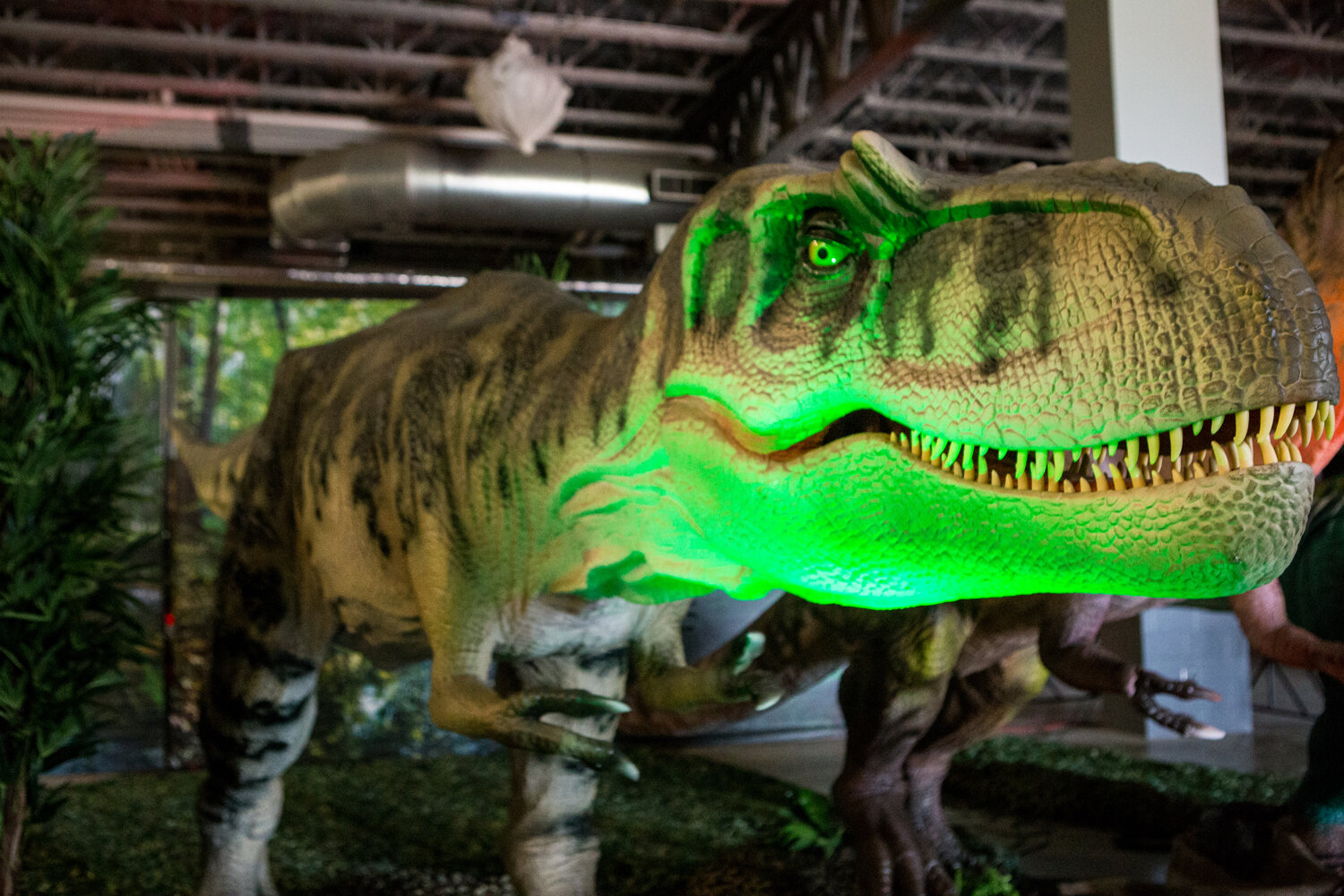Watch them roar: Dinos come to life at Jurassic Quest
Walk among the prehistoric giants at Jurassic Quest, where everyone can roam about and glimpse what Earth was like more than 165 million years ago.
Jurassic Quest — that traveling dinosaur experience combining archaeology with the latest tech — returns with its herd to Nassau Coliseum this weekend. This immersive spectacle features a bevy of lifelike dinosaurs — of all shapes and sizes — that are an impressive lot. They transform the arena environment back to the time when dinosaurs roamed, so that visitors can get up-close and personal with the creatures.
The three days of prehistoric adventuring — Saturday through Monday — includes visiting with the lifelike dinos, who’ll glare and move about as folks pass by, along with all sorts of related activities. Plus, the playful dino “babies” — Tyson the T-Rex, Trixie the Triceratops and Cammie, the Camarasaurus — always delight visitors.
You’ll find exciting curiosities at every turn. Rideable dinos, dinosaur shows, and interactive science and art stations — including a fossil dig — are all part of the experience. The littlest explorers will also enjoy a “Triceratots” soft play area, bounce houses and inflatables.
It’s all self-guided, so everyone can go through the activities at their own speed. But it’s suggested carving out at least two to three hours to get the most out of the experience.
It all began 10 years ago, created by Texas-based Jurassic Quest, which consults with paleontologists to make the creatures as realistic as possible, and reflect current thinking about how the giant creatures looked and acted.
“Dinosaurs are sort of universal to all people,” says Nick Schaefer (aka Prehistoric Nick), one of the expert “dino trainers” and fossil experts, who’s been with Jurassic Quest since 2016.
“When guests walk into our pillars, the first thing we have is our exhibit where we have dinosaurs from the Triassic, Jurassic and Cretaceous periods. We have over 165 million years worth of dinosaurs and other prehistoric creatures.”
One of the more popular components allows kids to become dino-trainers.
“We have the raptor training experience, where we have one of our trainers come out and interact with our guests to help train our full-sized Utahraptor (one of the newest additions to the animatronic pack),” Nick says. “Our guests will give central commands and try to make it listen.”
Ever wonder what it’s like to ride a dinosaur? Climb aboard one — such as the mighty T-Rex — and find out.
Kids also eagerly make their way to the fossil dig, where they can channel their inner paleontologist and study replicated and real fossils like T-Rex teeth, a triceratops horn, and life-size dino skull.
Much like the dinos, Jurassic Quest continues to evolve (without heading to extinction).
“The Quest” — a self-guided dinosaur scavenger hunt and expanded excavation station — add to this year’s experience. Visitors can also try to lasso escaped dinos in Rope-a-Raptor, assisting the experienced “Broncobusters” round up the creatures and bring them back to their pens. Also you might want to face off with a notoriously fast Utahraptor in a “Raptor Run” race.
Each dinosaur is painstakingly replicated, from coloration to teeth size, to textured skin, fur or feathers, drawing on the latest research about how we understand dinosaurs and ancient giants of the sea looked and moved. Plant settings, sound effects, lighting and electronics add to the authenticity of the setting.
“We actually have modified a few of the dinosaurs to stay as up to date as we can with the information,” Prehistoric Nick says. “One of our dinosaurs, the Spinosaurus, paleontologists are still learning about, and every couple of years, a new paper will come out and change the way it looks. So, we do our best to keep updating it.”
Aspects like its snout, posture, and even the tail have been readjusted.
These dino trainers really know their stuff. Prehistoric Nick, who studied archeology in college, shares the team’s passion for dinosaurs. He’s been involved in excavations, and has participated in paleontological digs in Canada.
“Dinos are often the introductory science for younger kids,” Nick says. “I think it’s really important to bring a sense of wonder about dinosaurs to the public. Studies have shown that kids who have sustained interest — like a fascination of dinosaurs — have a tendency to do better in STEM fields. So fostering a love of dinosaurs and science and engineering is really beneficial.”
Even more that that there’s magic in science.
“When guests first come through for the first time, there’s this jaw-dropping awe,” Nick says. “When they see these full-sized dinosaurs, it blows their mind.”







